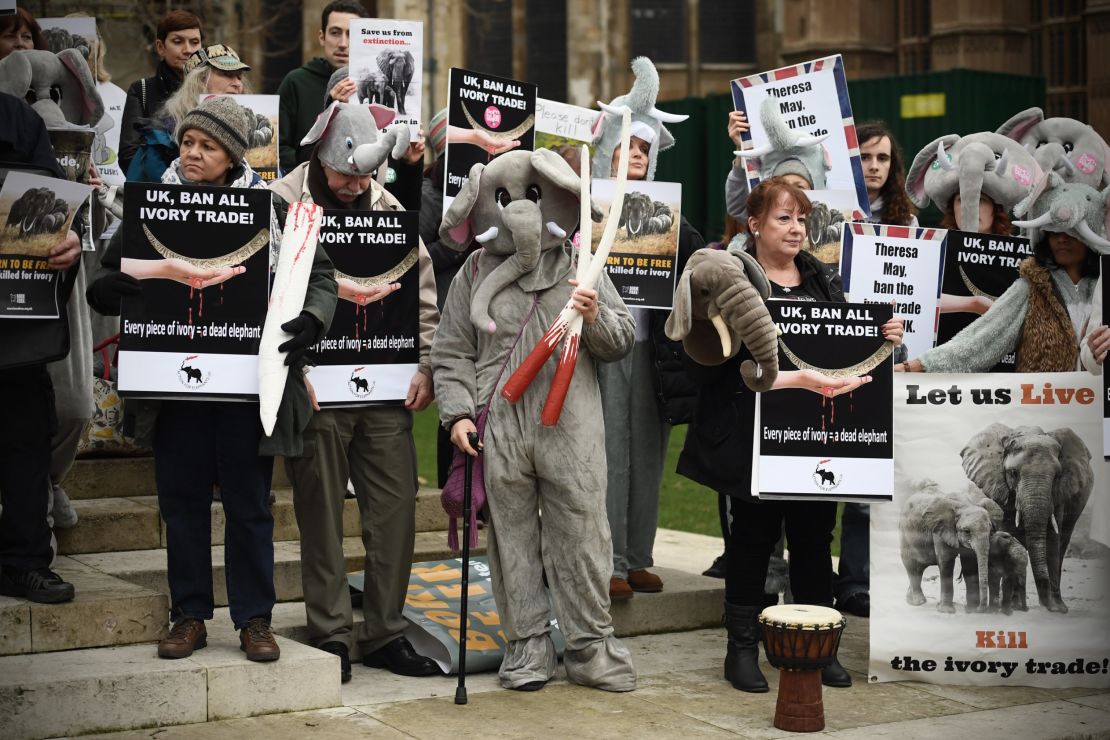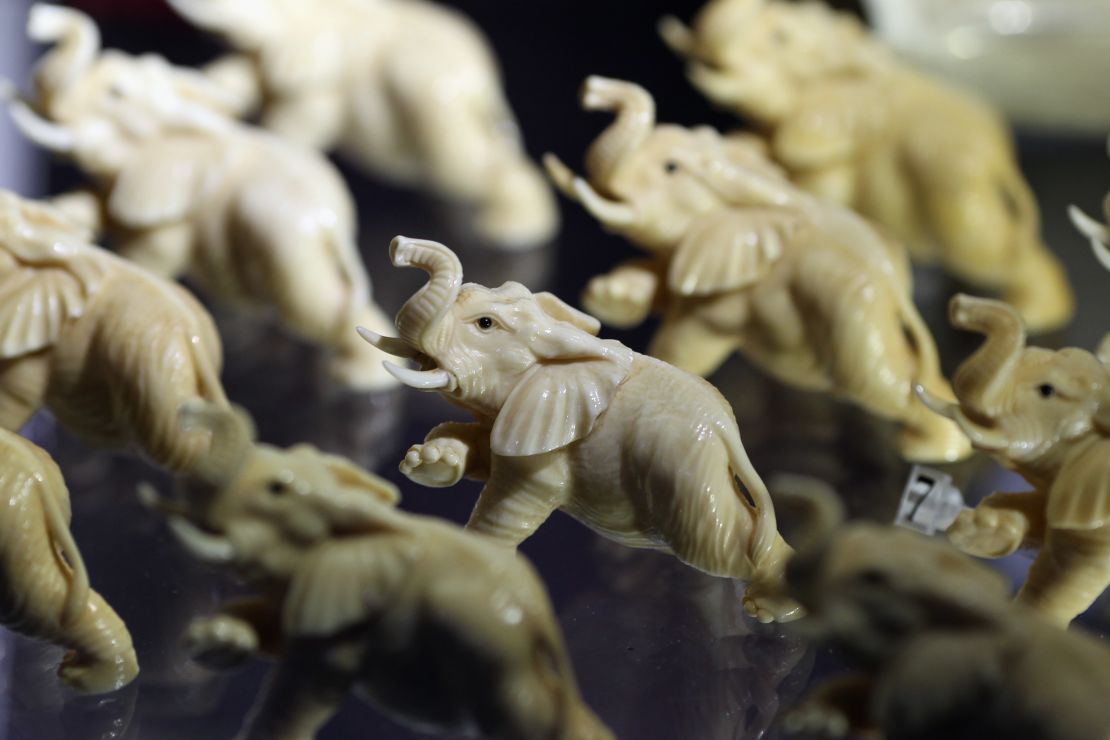Of all 13,000 objects in the British Museum that are made of ivory, the Lewis Chessmen are perhaps the most revered. The exhibit is easy to spot among the numerous display cases in the museum’s “Europe 1050-1500” room, since there is usually a crowd gathered around it.
Encased in glass, the chessmen are readied for battle on a red-and-white checkered board. A sign explains that the set reflects the order of feudal society in medieval Europe, with kings with swords across their laps and bishops dressed for Mass.
It is not just the intricacy of the craftsmanship that inspires awe, but the unlikely manner in which the pieces were discovered. Carved from walrus tusk and whale teeth, the pieces were made about 800 years ago, probably in Norway, and were likely buried by a merchant traveling along the trade route from Scandinavia to Ireland.
According to the museum, the chess pieces are “integral” to its collection and play an “indispensable part” in the presentation of the history of cultural achievement. Neil MacGregor, the former director of the British Museum, included the pieces in a 2010 book, “A History of the World in 100 Objects.”

Since antiquity, ivory has played a central role in the creation and trade of valuable furniture, objects and artifacts. Yet in the past half century, global demand for ivory has fueled the poaching of elephants in Africa and Asia to the point where the creatures are close to extinct.
Almost 150,000 elephants have been poached in under a decade for their tusks, according to the UK’s Department for Environment, Food & Rural Affairs. The International Union for Conservation of Nature estimates that only 415,000 African elephants remain. The decimation of the species has prompted some countries to revise their laws on the trade of ivory – not just the market for raw ivory, but for antiques.
An important distinction
Countries around the world have different domestic ivory laws in place. In October 2016, the members of the Convention on International Trade in Endangered Species (CITES) recommended that national ivory markets should be closed rather than regulated, arguing that illegal ivory goods can be passed off as legal antiques.
The 183 CITES nations agreed unanimously that every country should “take all necessary legislative, regulatory and enforcement measures to close their domestic markets for commercial trade in raw and worked ivory as a matter of urgency.”
In Europe, France has led the way by issuing strict restrictions on the trade of post-1975 ivory. The United States introduced a near-total ban on all ivory sales at a federal level in July 2016. Hong Kong, a major ivory retail market and a key transit point into mainland China, has announced that it will totally ban all ivory sales within five years. India, too, has a near-total ban in place.
As for China, in December 2016, state media reported that “China will gradually stop the processing and sales of ivories for commercial purposes by the end of 2017.”
In March the, the UK’s Department for Environment, Food and Rural Affairs will begin its consultation on a ban on the trade of ivory, to take effect in the country in September this year. The proposed ban will cover the sale of all items containing ivory dated between 1947 and the present day, though trade in worked items, such as art and antiques, from before 1947 will continue to be permitted.
In the upcoming months, the government will consult environmental groups, traders and industry experts before drawing up the precise terms of the ban – and it is those terms that are fiercely contested.

Conservationists say that the post-1947 ban does not go far enough, since the UK is a major transit country for both legal and illegal ivory – and a full ban would deal a blow to the international illegal ivory trade. They say that the proposal falls short of the total ban which the Tories pledged to “press for” in their last election manifesto.
Meanwhile, antique dealers and museums – though supportive of efforts to protect elephants and curb illegal trade – argue that ivory is a part of British cultural heritage, and that a total ban would penalize dealers and deplete public collections.
On Feb. 6, dozens of members of Parliament and a crowd of onlookers gathered in Westminster to debate the issue. More than 107,000 people had signed an e-petition calling for the shutdown of the UK’s ivory trade, enough to trigger the debate.
What was remarkable about this debate was the sense of déjà vu. Just two months earlier, following a similar e-petition, politicians representing all of the major political parties had convened in Westminster to present more or less the same arguments.
Victoria Borwick, a Conservative MP, said that the fact that another debate had been triggered demonstrated the strength of feeling among the public about the plight of elephants.
Borwick, who is the MP for Kensington (home to the Victoria and Albert Museum) and president of the British Antique Dealers’ Association (BADA), said the museums in her constituency are concerned a total ban on the trade of ivory would mean that private collections would no longer be gifted to museums and that the objects themselves would suffer, though regulations on private donations have yet to be debated.
“A total ban on the sale of items of our cultural heritage means that an object such as an 18th-century inlaid tea caddy would languish uncared for in a cardboard box in the attic,” she said in an email.
‘We’re not philistines’

Mark Dodgson, secretary general of BADA, also supports the post-1947 ban. Dodgson said that it is the trade in newer ivory “trinkets” – carvings of Buddhas or elephants – that is fueling poaching, not antiques. He argued that low-value “quite crude” carvings, often sold online, are distinguishable from pieces of cultural worth.
“We wouldn’t bulldoze the city of Bristol because it was built on the profits of slavery,” he said. “Is it really sensible to think that by destroying or stopping the trade in our cultural heritage we’re going to save any African elephants?”
Yet conservationists argue that the sale of antique ivory in the UK provides a false veneer of legality for black markets across the world. According to TRAFFIC, the wildlife trade monitoring network of the World Wide Fund for Nature, more than 30% of ivory exported from the EU comes from the UK, making an important “transit country” for illegal ivory.
“Whether we like it or not, our market is complicit in the trade in ivory,” said Charlie Mayhew, co-founder and CEO of Tusk, an anti-poaching NGO championed by Prince William. “The big concern that we have at the moment is that there is evidence that unscrupulous traders and dealers are using the 1947 rule to disguise more modern ivory as being pre-1947, when it’s not.”
Tusk and other NGOs are calling for a “near-complete ban” akin to the one in place in the United States. This would halt the trade of all ivory, bar legitimate antiques and artifacts that would be logged, verified and certified in a centralized system. Artworks fit for museums would be exempt.
“We are not out to destroy and to rule out genuine antiques and pieces of real cultural value that date back hundreds of years,” said Mayhew. “We’re not philistines.”
Last December’s announcement from China, the world’s largest ivory market, that it plans to shut down its domestic ivory market by the end of the year has placed UK lawmakers under renewed pressure.
Next year, the UK is to host the Illegal Wildlife Trade Conference, an international meeting aimed at eradicating poaching and the trafficking of species. The UK will find it difficult to “blow its own trumpet,” said Mayhew, when it hasn’t imposed sufficient legislation itself.
“If the UK is to have any credibility as a leader of the conservation world, we all feel that the time has come,” he said.






